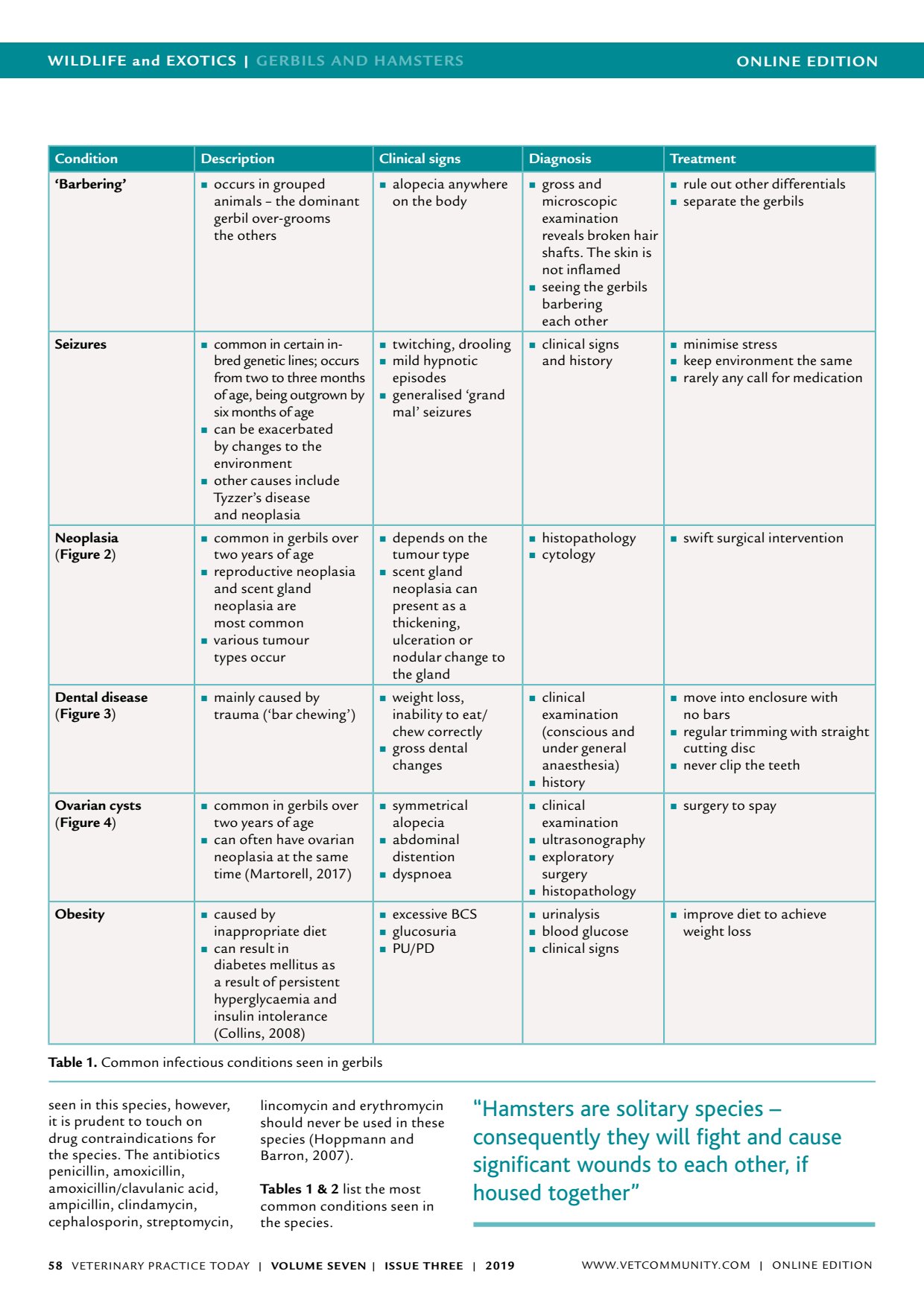ONLINE EDITIONWILDLIFE EXOTICS
ONLINE EDITIONWILDLIFE and EXOTICS | GERBILS AND HAMSTERS VETERINARY PRACTICE TODAY | VOLUME SEVEN | ISSUE THREE | 2019 58 Condition Description Clinical signs Diagnosis Treatment Barbering occurs in grouped animals the dominant gerbil over-grooms the others alopecia anywhere on the body gross and microscopic examination reveals broken hair shafts. The skin is not inflamed seeing the gerbils barbering each other rule out other differentials separate the gerbils Seizures common in certain in- bred genetic lines; occurs from two to three months of age, being outgrown by six months of age can be exacerbated by changes to the environment other causes include Tyzzers disease and neoplasia twitching, drooling mild hypnotic episodes generalised grand mal seizures clinical signs and history minimise stress keep environment the same rarely any call for medication Neoplasia ( Figure 2 ) common in gerbils over two years of age reproductive neoplasia and scent gland neoplasia are most common various tumour types occur depends on the tumour type scent gland neoplasia can present as a thickening, ulceration or nodular change to the gland histopathology cytology swift surgical intervention Dental disease ( Figure 3 ) mainly caused by trauma (bar chewing) weight loss, inability to eat/ chew correctly gross dental changes clinical examination (conscious and under general anaesthesia) history move into enclosure with no bars regular trimming with straight cutting disc never clip the teeth Ovarian cysts ( Figure 4 ) common in gerbils over two years of age can often have ovarian neoplasia at the same time (Martorell, 2017) symmetrical alopecia abdominal distention dyspnoea clinical examination ultrasonography exploratory surgery histopathology surgery to spay Obesity caused by inappropriate diet can result in diabetes mellitus as a result of persistent hyperglycaemia and insulin intolerance (Collins, 2008) excessive BCS glucosuria PU/PD urinalysis blood glucose clinical signs improve diet to achieve weight loss seen in this species, however, it is prudent to touch on drug contraindications for the species. The antibiotics penicillin, amoxicillin, amoxicillin/clavulanic acid, ampicillin, clindamycin, cephalosporin, streptomycin, lincomycin and erythromycin should never be used in these species (Hoppmann and Barron, 2007). Tables 1 & 2 list the most common conditions seen in the species. Table 1. Common infectious conditions seen in gerbils Hamsters are solitary species consequently they will fight and cause significant wounds to each other, if housed together WWW.VETCOMMUNIT Y.COM | ONLINE EDITION
